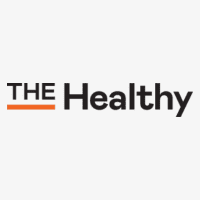Although the rate of mothers in the UK who initiate breastfeeding at birth is high, this dramatically drops off when reaching week six, making the UK one of the lowest breastfeeding rates.
This is due to inconsistent or lack of factual advice surrounding lactation. The advice to feed on demand and your breasts will supply enough milk and calories whenever your baby demands can be damaging and often incorrect.
A mother’s milk supply will be determined by her own body’s capability and several other factors: how lactation is activated, the feeding pattern, and the feeding effectiveness.
Breasts fill up and empty with milk supply building, increasing over weeks or months depending on stimulation and effective breast drainage. Milk supply is also impacted by sleep, food and water intake, emotions, stress, and energy levels.
The 7pm to7 am Sleeping Baby Routine has a 90% breastfeeding success rate but, interestingly, is a “fed is best” routine. This routine helps new mums understand their personal milk supply, flow, and letdown pattern. You see, how your breasts behave is personal to the individual and can differ with each breastfeeding experience.
Did you know?
Breastfeeding on a routine can encourage a higher calorie intake daily, resulting in less demand for feeding and longer stretches of sleep at night.
When breastfeeding on a routine and encouraging fuller feeds to support sleep, the milk needs to be easily digested. Eating a gas-free diet in the first few months can positively affect sleep and your new baby’s temperament.
Table of Contents
My Top 5 foods to avoid
🩸 Spices
🩸 Chilli
🩸 Peppers
🩸 Anything from the onion family
🩸 Anything from the cabbage family

Let’s talk more about mother’s food and liquid intake….
Your food and water intake are super important while breastfeeding, especially in the first few months while establishing an increasing milk supply. Becoming a parent usually means your needs come second as your baby takes priority, but when it comes to breastfeeding, your baby is getting out the nutrients you are putting in.
Food supplies the energy to support your body and recovery from birth, with lactation coming last on the list. Your amazing body is working hard! To support an increasing appetite and milk supply, It’s advised to eat regularly and give yourself enough time between breastfeeds to digest this food before your baby’s next feed: three meals and one to three snacks per day.
This doesn’t have to mean a heavy calorie intake. Choose whole fresh foods dense in nutrients rather than high sugar or processed foods.
Sometimes you may struggle to make the time to prepare healthy meals; try some of my quick snack ideas:

- Scrambled or poached eggs, an omelet, or unsalted nuts if you don’t like eggs or you’re a vegan. Both are great sources of protein.
- For a healthy and filling lunch, try a tuna or salmon salad. If you’re looking for something more substantial, wholemeal pita bread stuffed with ham and cheese, corn cakes, Ryvita crisp bread, or rice cakes topped with peanut or cottage cheese and tomato makes a great option. Or, if you’re feeling simple, butter a carrot and enjoy with some hummus on the side!
- Avocado on sourdough toast with olive oil, black pepper, and lime is a great way to get healthy fats. Or, for a nostalgic treat, try a jacket potato topped with cheese and low-sugar baked beans.
- Oily fish like mackerel and smoked salmon are also good for vitamins A and D, Omega 3, and quality milk production for your baby’s development.
- If you’re the type who likes to graze throughout the day, then you should create a salad bowl packed with all sorts of healthy and delicious ingredients. One of my favorites is a salad that includes beetroot, cucumber, spinach, tomato, cucumber, carrot, avocado, and pumpkin seeds – and it’s even better with a wedge of lime. Give it a try sometime!
- Calcium and iron are also really important and can be obtained by eating lots of kale, spinach, and the occasional red meat.
- If you have a blender or similar, create a smoothie packed with goodness, including bananas, berries, nuts, seeds, and peanut butter with almond or coconut milk.
- Start your day with a nutritious and filling breakfast that will give you the energy you need to get through your day. I love having a big bowl of full-fat Greek yogurt topped with mixed nuts, berries, sunflower, pumpkin, and chia seeds.
There are other factors to consider when thinking about your milk supply: sleep and rest, low-stress levels, emotional well-being, and of course, expression.
Breast pumping is important to the 7pm to 7am Sleeping Baby Routine’s breastfeeding plan. With the right pump, breast pumping helps stimulate and understand your supply and speed of flow. It truly gives you a greater understanding of how your breast works.
Go to my blog for more information, help, and advice on breastfeeding and milk supply.
About Charmian
Charmian Mead is a Lactation and Breastfeeding Expert offering Mum’s worldwide help and advice through The Sleeping Baby Routine Lactation and breastfeeding plan. Charmian is also the best-selling author of the 7pm to 7am Sleeping Baby Routine book, plus is a Baby Sleep Consultant with the approach of “becoming a parent doesn’t have to mean sleep deprivation.”













